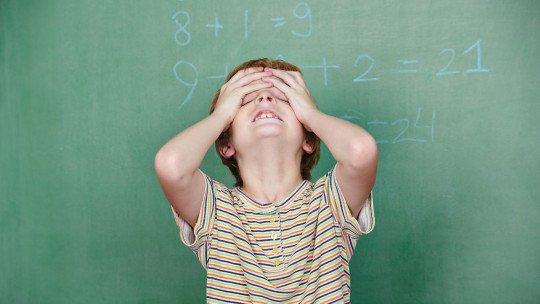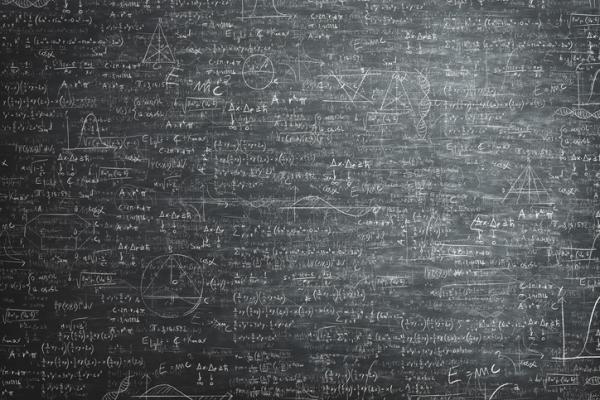
Every day we use mathematics in daily activities, they are essential to maintain our personal economy and for many of our daily tasks. Shopping at the supermarket, splitting the bill among friends at a bar or knowing what quantities to use to make a cake; Numbers are present in our daily lives.
There are people who suffer from dyscalculia. It could be said that it is similar to dyslexia, but instead of referring to language, it has to do with mathematics and calculation Basically, when we talk about dyscalculia, we refer to a whole variety of problems related to the difficulty of learning mathematics.
It is important to differentiate what dyscalculia really is, a learning disorder, from what is the mere difficulty in learning and managing mathematical and calculation skills. In this article we will expand on what dyscalculia is and how many different ways it can present, learning to identify each of them.
What is dyscalculia?
As we have commented, Dyscalculia is part of the learning disorders, specifically defined as difficulty in learning mathematics It is a neurological condition that affects the neural connections that process numerical language. Therefore, affected people have difficulties understanding mathematics and tasks related to it.
Normally, this condition is identified during childhood, with the subject of mathematics being a very important educational block during the years of schooling. Boys and girls who suffer from dyscalculia have confusion with numbers and signs and have difficulties carrying out mental calculations or geometric abstractions. It is estimated that this disorder occurs in 4.5% of school-going boys and girls, with a similar distribution between boys and girls.
It is difficult to diagnose it because mathematics education is usually difficult for many boys and girls and teaching staff may think that what dyscalculia is is a simple difficulty or a lack of desire to learn. Therefore, it is important to know how dyscalculia can present and what can be done to help boys and girls who suffer from it overcome these difficulties or learn to live with them.
Types of dyscalculia
There have been six different types of dyscalculia:
1. Verbal dyscalculia
Verbal dyscalculia refers to the difficulty in handling numbers and understanding numerical concepts associated with the names of numbers, units of measurement in quantities, and understanding mathematical terms and symbols. Basically, it is closely related to the understanding of numerical and mathematical concepts that are presented orally. Examples of verbal dyscalculia can be:
2. Practognostic dyscalculia
Practognostic dyscalculia has an important relationship with fine motor skills and the manipulation of objects Therefore, it results in the difficulty of comparing quantities and sizes, for example. People affected by this type of dyscalculia will have difficulties enumerating, comparing and manipulating objects mathematically.
In these cases, reference is not made to the difficulty in recognizing and naming numbers, as in verbal dyscalculia, but to difficulties related to counting or the ability to identify how many components are found within the same object, for example.
3. Lexical dyscalculia
Lexical dyscalculia refers to the difficulty in reading numbers and mathematical symbols, without affecting numerical or mathematical understanding when talking about different concepts In these cases, difficulties with numbers appear exclusively when reading them, despite having adequate cognitive and academic skills in other areas. It is the most common type of dyscalculia. Some examples of this dyscalculia may be:
4. Graphic dyscalculia
Graphic dyscalculia is difficulty writing numbers and mathematical symbols Boys and girls with graphic dyscalculia can understand mathematical concepts, but they are not able to write them, in addition to having problems writing symbols as well. Having these difficulties or errors related to numerical writing, boys and girls affected by this type of dyscalculia may make mistakes when writing numbers or copy them directly from another text. Some examples of this can be presented like this:
5. Ideognostic dyscalculia
Ideognostic dyscalculia, also known as visuo-spatial dyscalculia, affects the ability to understand and handle special and visual mathematical concepts People with this type of dyscalculia have difficulties in visualizing and mentally manipulating shapes, sizes, distances and relationships associated with mathematical concepts. This can be presented in different ways, for example:
6. Operational dyscalculia
Operational dyscalculia, also called procedural or calculative dyscalculia, affects the ability to perform mathematical calculations and follow numerical procedures These people may have difficulties understanding and using the different steps and algorithms necessary to carry out mathematical operations. Among its different ways of presenting itself, we find:
- Difficulty doing basic operations such as addition, subtraction, multiplication and division, both mentally and in writing.
- Problems remembering and applying calculation steps and procedures.
- Errors in calculation, omission or exchange of numbers, which produce incorrect operations.
- Difficulty understanding and applying advanced mathematical concepts such as fractions, percentages or square roots.
- Problems in solving mathematical problems in a sequential and logical way.
Indicators to detect it
As we have previously mentioned, it is important to distinguish those boys and girls who have difficulties with calculations and numbers from those who have dyscalculia as such. For these cases, it is very important to develop a diagnosis of the problem in time to be able to take the relevant educational measures.
In addition, dyscalculia must also be differentiated from acalculia. Acalculia is a disorder related to the ability to calculate that is not determined by learning difficulties or educational development, but by a brain injury which can occur even during adulthood. To conclude this article, we are going to review the most common symptoms of dyscalculia, to facilitate its detection and differentiate it from other difficulties or problems:
1. Difficulties in numerical writing
When learning to write numbers, boys and girls with dyscalculia experience problems writing them correctly, doing so backwards or with disconnected strokes, without being able to represent the numbers properly.
2. Many difficulties in sequential series or numerical classifications
Sequential series or numerical classifications are ordered sequences of numbers with a link to each other; numbers arranged according to a pattern or formation rule. For example, the most basic sequential series is counting the numbers 1, 2, 3, 4… in a successive and orderly manner, which follows an increasing pattern. Boys and girls with dyscalculia experience many difficulties in understanding these series and associating them with a common pattern
3. Reasoning problems
Reasoning problems in people with dyscalculia problems mainly affect the resolution of mathematical problems that require a specific understanding of numbers, quantities or calculations.
4. Difficulties with numbers in general
These difficulties refer to very varied problems regarding the identification and understanding of numbers:
- Difficulties in identifying them that generate doubts or errors when naming or writing them.
- Confusions between similar graphs (for example, 3 and 8; 4 and 7…).
- Confusions between mathematical signs (confusing addition with subtraction or vice versa, for example), which can generate inversion, rotation or transposition errors when writing or naming them.
- Problems in the interpretation of numerical sentences.
- Difficulties in operational thoughts, mental calculation, order, quantities…
- Difficulties in spatiotemporal coordination.
- Problems understanding concepts such as position or size.
- Great difficulty remembering or memorizing rules, formulas or mathematical sequences such as multiplication tables.








